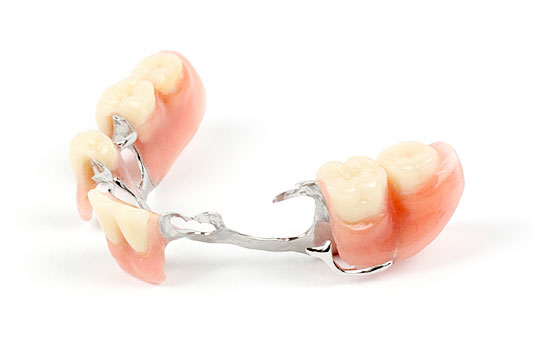Types of Partial Dentures
A partial denture is used by patients who have some natural teeth. A removable partial denture is usually made to replace one or more teeth and is used to fill in the gaps where teeth have been recently lost or previously removed. Partial dentures are customized to your specific requirements and teeth are fixed to a gum-coloured base. This base is connected to a frame that attaches to existing teeth with clasps.
Partial dentures are designed to support the remaining natural teeth and prevent them from shifting into the space left by the loss of a natural tooth. With newer designs, materials, and techniques, partial dentures are more comfortable to wear than ever before. Ask Robert about the many designs available, some of which have no visible clasps and are virtually undetectable!
With a partial denture, you will look, feel, and chew better!
Types and Styles of Partial Dentures
To determine the type or style of partial denture best for you, your Denturist will examine factors like the number of teeth remaining, their position in your mouth, and their stability.
Partial dentures may be tooth-supported or tooth- and tissue-supported, and can be made of acrylic, a metal/acrylic combination or flexible thermoplastic.
An acrylic partial denture is typically used for transitional or temporary replacement of missing teeth, whereas the metal/acrylic partial denture, commonly called a cast partial denture, is usually a more rigid and permanent style of denture. The metal is either highly compatible chrome-cobalt alloy or titanium, which are both light, ultra-thin, and very strong. New thermoplastic partial dentures are flexible and removable. They should be removed each night to maintain a healthy oral environment.
Removable partial dentures restore a person’s natural appearance and greatly improve the ability to chew and speak clearly.
There are significant differences between the types of partial dentures and the various materials used to create them. To determine the options that are best for you, contact Robert MacLeay and his team for a more detailed explanation of these differences.

Call Us Now to Discuss
Removable Partial Dentures!